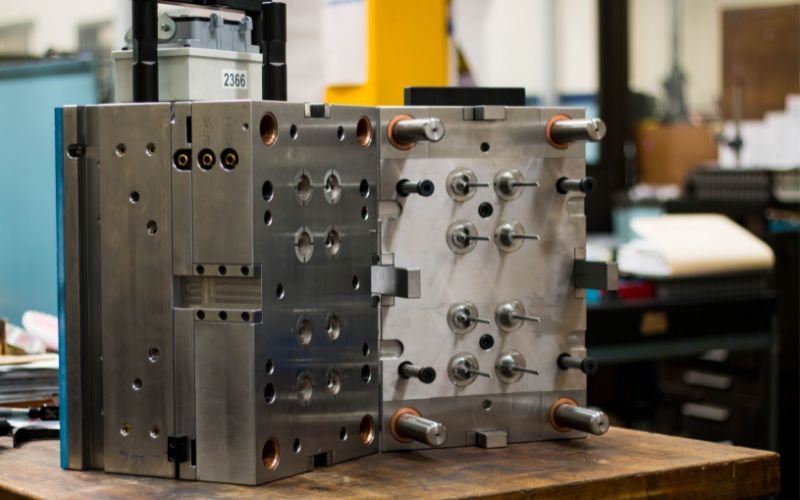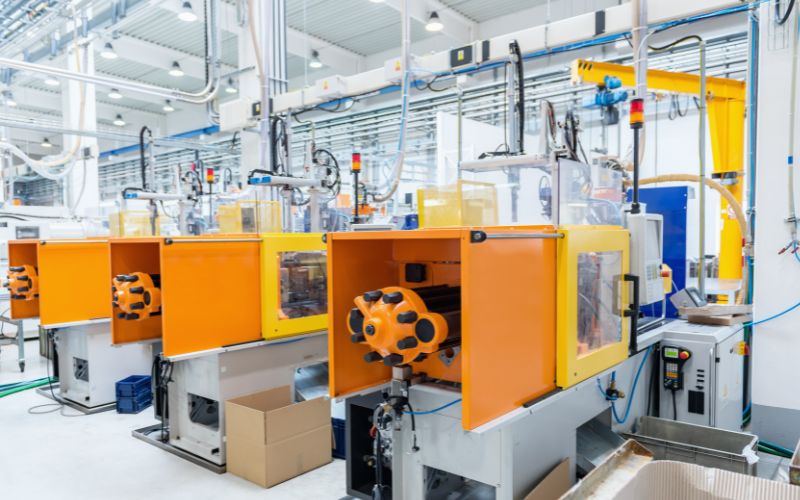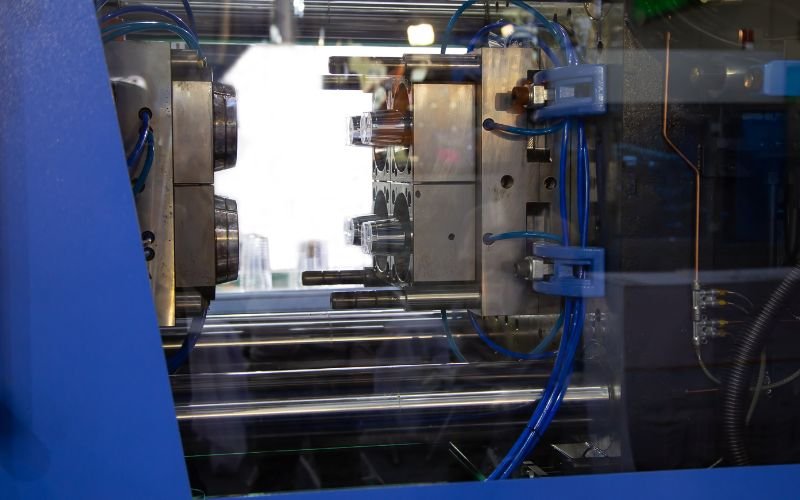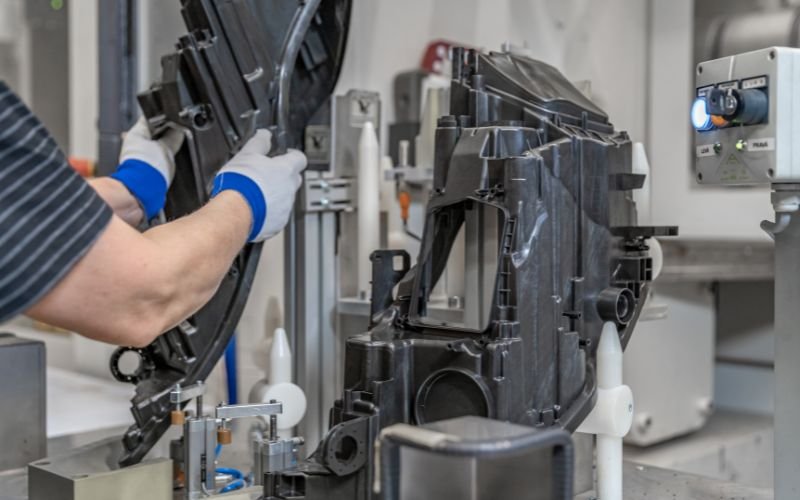Plastmasas iesmidzināšanas formēšanas šķīdums
Visaptveroša soli pa solim sniegta rokasgrāmata
Plastmasas iesmidzināšana ir sarežģīts un precīzs ražošanas process, kas pārveido plastmasas izejmateriālu plašā izstrādājumu klāstā ar sarežģītām formām un precīziem izmēriem.

1. darbība
Dizains un veidņu sagatavošana
- Produkta dizains: Process sākas ar detalizētu produkta dizainu vai koncepciju. Dizaina apsvērumi ietver funkcionalitāti, estētiku, materiālu izvēli un izgatavojamību.
- Veidnes dizains: Veidne, kas pazīstama arī kā instruments vai matrica, tiek izveidota, pamatojoties uz izstrādājuma dizainu. Veidne sastāv no divām pusēm – dobuma un serdes –, kas veido galaprodukta formu.
- Materiāla izvēle: Izvēlieties piemērotu plastmasas materiālu, pamatojoties uz izstrādājuma prasībām, ņemot vērā tādus faktorus kā mehāniskās īpašības, ķīmiskā izturība un temperatūras stabilitāte.
- Veidņu izgatavošana: Kvalificēti instrumentu ražotāji ražo veidni, izmantojot precīzas apstrādes metodes. Veidnes sarežģītība un izmērs ietekmē izgatavošanas laiku un izmaksas.
2. darbība
Iesmidzināšanas formēšanas process
- Saspīlēšana: Veidne ir uzstādīta uz iesmidzināšanas formēšanas iekārtas. Abas puses ir droši aizvērtas, izmantojot hidraulisku vai mehānisku spēku, lai nodrošinātu pareizu izlīdzināšanu.
- Injekcija: Plastmasas granulas, kas pazīstamas kā sveķi, tiek ievadītas iesmidzināšanas formēšanas iekārtas piltuvē. Granulas karsē un izkausē mucā līdz konsekventam izkusušam stāvoklim.
- Injekcijas spiediens un ātrums: Izkausētā plastmasa tiek ievadīta veidnes dobumā zem augsta spiediena. Iesmidzināšanas ātrums un spiediens tiek kontrolēti, lai aizpildītu veidni un novērstu defektus, piemēram, tukšumus vai izlietnes pēdas.
- Dzesēšana: Pēc veidnes piepildīšanas plastmasa iekšpusē sāk atdzist un sacietēt. Dzesēšanas laiks tiek rūpīgi kontrolēts, lai sasniegtu vēlamo detaļu kvalitāti.
- Turēšanas spiediens: Dažas veidnes ietver spiediena noturēšanu, lai kompensētu materiāla saraušanos dzesēšanas laikā. Tas nodrošina, ka daļa saglabā savu formu un izmērus.


3. darbība
Veidnes atvēršana un izmešana
- Dzesēšanas pabeigšana: Kad plastmasa ir pietiekami atdzisusi un sacietējusi, veidne atveras, atklājot iekšpusē sacietējušo daļu.
- Izmešana: Veidnes izgrūšanas tapas izstumj daļu no veidnes dobuma. Izmešanai jābūt maigai, lai nesabojātu detaļas virsmu.
4. darbība
Pēcapstrāde
- Apgriešana un atslāņošanās: Liekais materiāls, ko sauc par zibspuldzi, tiek noņemts no daļas. Apgriešana var ietvert manuālus vai automatizētus procesus, lai sasniegtu galīgo formu.
- Sekundārās darbības: Atkarībā no izstrādājuma prasībām var tikt veikti papildu procesi, piemēram, urbšana, apstrāde vai montāža.


5. darbība
Kvalitātes kontrole un pārbaude
- Vizuālā pārbaude: Katrai daļai tiek vizuāli pārbaudīti defekti, piemēram, virsmas nepilnības, krāsu neatbilstības vai deformācijas.
- Izmēru pārbaudes: Daļas tiek izmērītas un salīdzinātas ar projektā norādītajām specifikācijām. Uzlabotas mērīšanas iekārtas nodrošina precizitāti.
6. darbība
Iepakojums un piegāde
- Iepakojums: Gatavās detaļas ir rūpīgi iesaiņotas, lai transportēšanas laikā netiktu sabojātas.
- Piegāde: Detaļas tiek nosūtītas klientam vai montāžas uzņēmumam, lai tās integrētu lielākos produktos vai izplatītu galalietotājiem.

